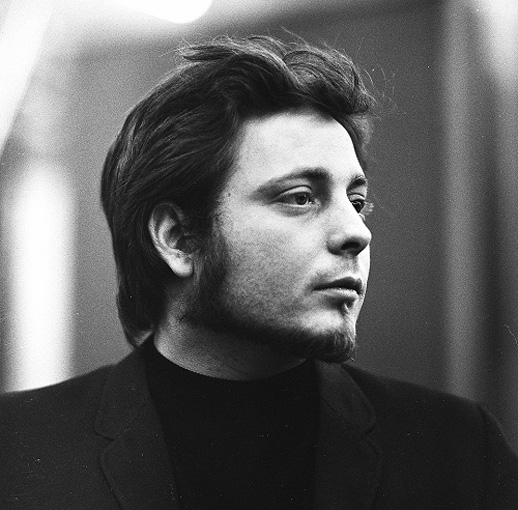The truly brilliant Shadow Morton died on Thursday (and that’s called sad).
Lois Wilson pays tribute:
It was Mary Weiss, the lead singer of the Shangri-Las, who announced the sad passing of the songwriter and producer George ‘Shadow’ Morton on February 14 from cancer. It was Morton who wrote and produced Remember (Walking In The Sand), the mournful, beautiful, melodrama that gave Mary and the Shangri Las their first US hit, a Number 5 in 1964. The song was written in a fit of pique – Morton had befriended Brill Building scribe Ellie Greenwich in his teens and went to see her at 1619 Broadway. Her then boyfriend and songwriting partner Jeff Barry, believing he was just another chancer trying his luck, told him to bring in some of his songs for them to hear. Morton recalled the moment to me in 2005. “He asked me, ‘Just what is it you do for a living?’ I said, ‘I’m a songwriter like you.’ So he said, ‘Why don’t you bring me one?’ He suspected I didn’t have any songs, I didn’t and I got in my Buick, drove to the beach in Long Island and thought, I’ll show him and I wrote Remember (Walking In The Sand) in the car. That was my first song. I knew this group, the Shangri-Las. They played the clubs in Queens. We demo-ed the song in a friend’s basement studio on a Sunday and it sounded good. I played it to Ellie Greenwich and Jeff Barry the next day. Jeff played it to Jerry Leiber, he asked me if I wanted a job. I did.” Leiber with his songwriting partner Mike Stoller had launched their Red Bird label earlier that year, and it became the perfect home for Morton, who over the next two years, became one of the chief architects of the mid-60s girl group sound mapping the vagaries of the adolescent condition on a series of Shangri-Las records defined by their angsty, desperate lyrics and use of sound effects. On Remember (Walking In The Sand) he used the cry of seagulls, on its 1964 follow up Leader Of The Park, the death disc he penned with Greenwich and Barry that went to the top of the US charts, he utilised the revving of a motorcycle and mimicked the sounds of a fatal crash as Mary cried, “Look out! Look out! Look out! Look out!.” “No one else was doing that, it added atmosphere, it added a visual,” he said.
Born on September 3, 1940 in Richmond, Virginia, Morton was raised in Brooklyn then Hicksville, where he formed his first group, the Marquees. It wasn’t until he called up Ellie Greenwich and had that fateful first meeting with her and Barry that he broke through.
He continued to experiment and push boundaries after the Shangri-Las, although he never forgot his girl group roots – working with Janis Ian on 1967’s heartbreaking Society’s Child, her debut single that dealt with interracial relationships; teaming with Vanilla Fudge on their 1968 heavy psych rock cover of the Supremes’ You Keep Me Hangin’ On, a US Top 10 hit, and hooking up with the New York Dolls, a trashy take on the Shangri-Las, with whom he produced their 1974 second album Too Much Too Soon. The Dolls guitarist Johnny Thunders would go on to cover Morton’s Give Him A Great Big Kiss on his 1978 So Alone solo album. Morton also produced Iron Butterfly’s 1968 hit In A Gadda Da Vida.
An adroit songwriting talent with a demiurgic approach to production, Morton should be remembered alongside the other great auteurs Phil Spector, Joe Meek and Jack Nitzsche. He is sorely missed.
